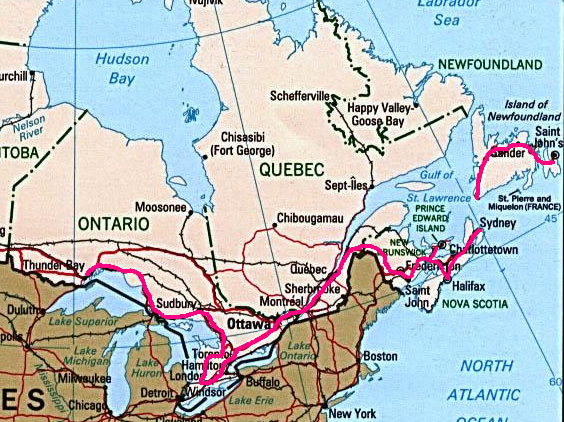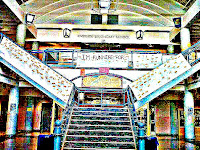Terry Fox
History:
Terry Fox was born on July 28, 1958, in Winnipeg Manitoba. In 1966 him and his family moved to Surrey, British Columbia. Soon after in 1968 the settled down in Port Coquitlam also in British Columbia. Terry was a very active teenager and played many sports such as soccer, rugby and baseball. Terry had a love for basketball but was always too short and at that time was not the best player. At the time he was just living a normal life and enjoying playing sports.
In November, 1976 Terry was distracted and crashed into the back of a pickup truck. Although his car was ruined, he only came out with a sore right knee. The pain came back in December but he ignored it and continued playing basketball and doing everything as normal. By March 1977 the pain had become more severe and he finally went to the hospital. There, he was diagnosed with osteosarcoma a form of cancer that often starts at the knee. Terry believed it was the car accident had weakened his knee but the doctor stated that that was not a factor in the cancer forming. He was told that his leg would have to amputated and that chemotherapy would be needed. As at that time medical treatments were new. He only had a 50% chance of survival. After the amputation Terry was walking 3 weeks after. Fox ended his treatment with new purpose: he felt he owed his survival to medical advances and wished to live his life in a way that would help others find courage. The night before his cancer surgery, Fox had been given an article about Dick Traum, the first amputee to complete the New York City Marathon. The article inspired him; he embarked on a 14 month training program, telling his family he planned to compete in a marathon himself. His plan was to run across Canada. This run across Canada was named the marathon of hope. The route started in St. Johns Newfoundland and was supposed to end in Thunder Bay Ontario. Throughout his run, he was trying to collect money for cancer research. The run was doing well until he was experiencing flu and cold like symptoms. He kept going not really complaining about it.On September 1, outside of Thunder Bay, he was forced to stop briefly after he suffered an intense coughing fit and experienced pains in his chest. He kept going until a few miles later he experienced the same issues he had a few miles before, he then asked Doug to drive him to hospital where he was told the cancer had came back and spread to his lungs. Then he was forced to end his run after 143 days and 5,373 kilometers (3,339 miles). In the months following, he received multiple chemo treatments although the cancer was still spreading. He sadly died at 4:35am in Royal Columbian hospital, on June 28, 1981.
After Terry's death his legacy continues. Schools and programs across the globe continue to raise money for his cause. Every year there is a school Terry Fox run. This year one of our fundraisers were selling balloons for one dollar, as well as donations boxes in your RAP class. Two men spoke at the assembly that both had experienced a type of cancer and have survived. After the assembly the competitive runner were let out followed by the rest of the school. It was really cool seeing all of the students walking/running. I find the Terry Fox run to be a great thing that schools do. I remember when I first did it and learned about him how fascinated I was at a young age. I hope that schools never stop the Terry Fox run. As we need to keep Terry's legacy going.







No comments:
Post a Comment